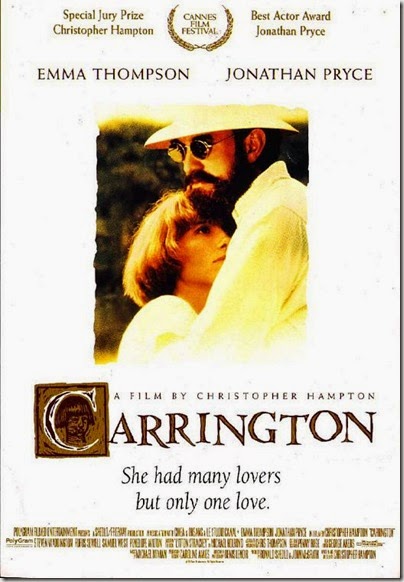I usually spend a fair bit of Christmas and Boxing Day reading the books that I hav e been given. This year was marked by an initial paucity of books, although I got some today at lunch. People worry that if they give me books I will have read them. That’s actually unlikely, because you generally won’t find the books I buy or read in current bookshops.
e been given. This year was marked by an initial paucity of books, although I got some today at lunch. People worry that if they give me books I will have read them. That’s actually unlikely, because you generally won’t find the books I buy or read in current bookshops.
Initially restricted in new reading, I turned back to my existing books and indeed my own notes, continuing the reading of Carrington, the book I mentioned in my last post, Carrington, family life and the freedom of the new.
In a comment on that post, kvd wrote:
Anyway, so I admit it - I clicked on the link for Carrington's life, and what do I get? Nothing but sex, baby, nothing but sex. Never mind her artistic accomplishments - we have to get down to the nitty, the gritty, important, stuff: sex!
We pin all these bright flowers and butterflys to the page with mealy mouthed words about what? Not their human accomplishments - no - just their SEX, baby, let's talk about sex.
I'm so tired of that lens; it needs something like DOUBLE-CAPS-LOCK-BOLD-ITALICS to get my attention these days. She was actually quite a good painter: ttps://www.google.com.au/search?q=dora+carrington+paintings&source=lnms&tbm=isch&sa=X&ei=KNucVOKELsa4mwXy1YGACA&ved=0CAgQ_AUoAQ&biw=1467&bih=730
I think that kvd has a point here. You can see it in the 1955 British film on her life. This focuses on her complex personal life and loves.  Her art is lost.
Her art is lost.
I don’t like some of her paintings, they are too naive for me, but I do like her portraits. This one of Lytton Strachey with its elongated fingers has become something of a visual icon.
One of the things that I became interested in in reading Gretchen Gerzina's biography of Carrington were the intricacies of the overlaps between the English and Australian artistic experience. The specific trigger was the descriptions of the stylistic conflicts during the period when Carrington studied at Slade. I wanted to refresh my memory on the way that those conflicts played out in an Australian context.
To investigate this, I went as I so often do to Wikipedia. Here I struck a major disappointment at the poor standard of the Wikipedia entry on the history of Australian art. It just stops at the Heidelberg School as though there had been some form of conflict that had prevented any later additions. It is too far outside my current focus to try to add material, and in any event I do not have the knowledge or easy access to the material required to do so. But it’s a bit sad, nevertheless.
Ah well. Time to finish this post.









No comments:
Post a Comment